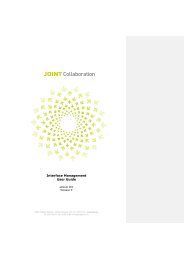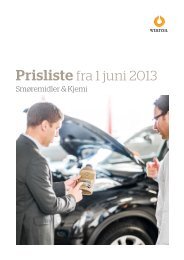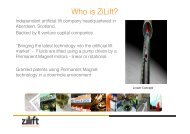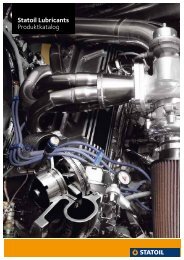Ida Ekblad MarIus Engh anawana haloba lars lauMann - Statoil
Ida Ekblad MarIus Engh anawana haloba lars lauMann - Statoil
Ida Ekblad MarIus Engh anawana haloba lars lauMann - Statoil
You also want an ePaper? Increase the reach of your titles
YUMPU automatically turns print PDFs into web optimized ePapers that Google loves.
DEVILS, WEREWOLVES<br />
AND OTHER MYTHS<br />
How can you explain – to a boy emotionally in love with his<br />
skateboard – the fascination of archaeology, the interest and<br />
passion in something ancient and archaic hidden under the<br />
dust (like the essential piece in a mosaic) which represents a<br />
slice of history? Curiously, the boy in love with slalom, downhill,<br />
freestyle and “ollies” may even become passionate about the<br />
mystery of digging up the past. In that event, you should just<br />
stand back and attentively watch the evolution of an articulate<br />
personality when driven by his unusual passions.<br />
The archaeology of form: the idea implied in the various<br />
objects around us; the time that gives places their spirit; the<br />
history that defines our course and destiny – these make up the<br />
concept of archaeology that Marius <strong>Engh</strong> reveals to us in his work.<br />
<strong>Engh</strong> uses two expressive media in particular to communicate<br />
his ideas: photography and sculpture. These two expressive<br />
channels summarise different stages in his research: <strong>Engh</strong><br />
speaks to us about history, anthropology, modernism and social<br />
semiotics. We should imagine the artist as an expert on times<br />
past, seeking traces and details that manage to reconstruct a<br />
broader picture of complex human experience, moving among<br />
the signs that civilisation has left over time and the meanings<br />
given to objects and places throughout their history.<br />
<strong>Engh</strong> uses photography to provide an additional viewpoint<br />
to our customary visual exploration of the world around us. His<br />
different perspective makes it possible for us to discover folds<br />
in the cultural landscape that conceal the details needed to give<br />
observers pause for thought about their surroundings.<br />
The Lead, Follow or Get the Hell Out of the Way photographic<br />
series – 14 images depicting details of the Teufelsberg (Devil’s Hill)<br />
in suburban Berlin – focuses on fragments of a history charged<br />
with meanings of an almost excessive emotive impact. <strong>Engh</strong>’s<br />
interest focuses precisely on the capacity that Teufelsberg has<br />
had to accumulate historic significance by virtue of the various<br />
episodes directly involved in its creation.<br />
Teufelsberg is an artificial hill standing in a location intended<br />
for a grandiose project – the new Berlin Technical University –<br />
designed by the Third Reich’s foremost architect, Albert Speer.<br />
The project, however, saw the development of only one faculty<br />
in the entire complex that, according to the Nazi architect’s<br />
theory of the “value of ruins”, would retain its dignity as a<br />
monumental construction – leaving behind an indelible mark<br />
of its greatness – even after its destruction. At the end of the<br />
Second World War, various attempts were made to demolish<br />
this Nazi building – its foundation stone was laid by Adolf Hitler<br />
in 1937 – but, when this objective was not achieved, it was<br />
decided to bury it under the remains of the more than 80,000<br />
buildings in Berlin bombed by the Allies, thereby artificially<br />
creating one of the highest points in the city. As if this were not<br />
enough, during the Cold War the Americans decided to locate<br />
the NSA listening station on “Devil’s Hill”.

















